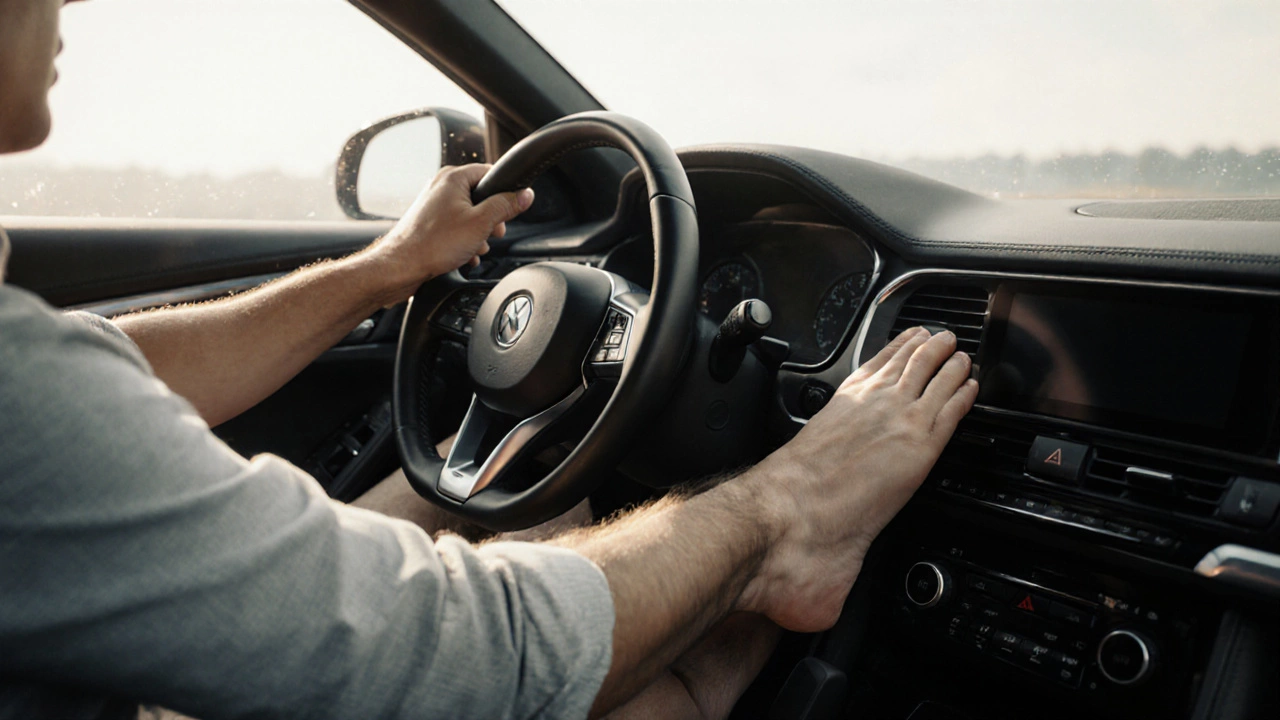Both Feet Driving: What It Means and Why It Matters for HGV Drivers
When you hear both feet driving, the practice of using one foot for the accelerator and the other for the brake. Also known as dual-footing, it’s a habit some new drivers pick up thinking it gives more control — but for HGV drivers, it’s a dangerous mistake. Heavy goods vehicles weigh up to 44 tonnes. That’s not a car. You don’t brake like you’re in a hatchback. Using both feet increases the chance of accidentally pressing the brake and accelerator at the same time — a mix-up that can cause sudden stops, jackknifes, or even collisions with traffic behind you.
UK driving standards, backed by the DVSA and HGV training guidelines, require single-foot operation: right foot only for both pedals. Why? Because your brain and muscles learn one clear motion. When you need to slow down, your foot moves from accelerator to brake — no crossing, no confusion. In a lorry, reaction time is everything. A split-second error can turn a minor incident into a major accident. Studies from the Transport Research Laboratory show that dual-footing increases pedal misapplication risk by over 60% in large vehicles, especially under stress or fatigue. That’s not a small number. That’s a life-or-death gap.
It’s not just about safety — it’s about professionalism. Employers and examiners look for consistent, controlled driving habits. During your HGV practical test, the official assessment for obtaining a Class 1 licence in the UK, using both feet can lead to an automatic fail. Examiners are trained to spot it. They don’t just care if you pass the test — they care if you’ll survive on the job. And if you’re driving for a logistics company, your company’s insurance might not cover you if an accident is linked to poor pedal technique.
Some drivers think both feet help with smooth gear changes or better control on hills. But that’s a myth. In an HGV, you don’t need to ride the clutch or hover over the brake. You use engine braking, proper gear selection, and anticipation — skills you build with practice, not extra feet. The best drivers don’t rush. They plan. They look ahead. They ease off the accelerator early. That’s how you stop smoothly without touching the brake. That’s how you stay in control.
There’s a reason every serious HGV training course starts with pedal discipline. It’s not just a rule — it’s the foundation. If you’re learning to drive a lorry, unlearning bad habits is harder than learning the right way. Start now. Train your right foot like a muscle. Make it automatic. Your future self — and everyone else on the road — will thank you.
Below, you’ll find real posts from drivers who’ve been there — whether they struggled with pedal control, failed their test because of it, or learned how to fix it. No fluff. Just what works.
- November 8 2025
- 0 Comments
- Rowan Cavendish
Do You Use Both Feet When Driving an Automatic Car?
Learn why using both feet when driving an automatic car is risky, what experts recommend instead, and how switching to right-foot-only braking improves safety and reduces wear on your vehicle.
- Driving Lessons (41)
- HGV Training (31)
- Driving Test Tips (31)
- Driving Test Booking (26)
- Driving Licence Renewal (23)
- Driving Theory Test (21)
- Pass Plus Course (15)
- Driving Tips (15)
- Intensive Driving Course (15)
- Driver Licensing (14)
Categories
- December 2025 (12)
- November 2025 (13)
- October 2025 (21)
- September 2025 (5)
- August 2025 (8)
- July 2025 (30)
- June 2025 (30)
- May 2025 (30)
- April 2025 (31)
- March 2025 (30)
- February 2025 (28)
- January 2025 (34)
Archives
- driving lessons
- driving test
- driving tips
- intensive driving course
- driving test tips
- HGV training
- learn to drive
- driving theory test
- driver training
- driving test booking
- pass driving test
- HGV driving
- road safety
- driving license renewal
- Virginia driving test
- learner drivers
- safe driving
- Virginia driver's license
- driving license
- learning to drive

